Additional information
| Product Dimensions | 1.9 x 4.7 x 2.8 inches |
|---|---|
| Item Weight | 14.4 ounces |
| ASIN | B07WJYY49Q |
| Item model number | 3611C021 |
| Batteries | 1 Lithium ion batteries required. (included) |
| Customer Reviews | /** Fix for UDP-1061. Average customer reviews has a small extra line on hover* https://omni-grok.amazon.com/xref/src/appgroup/websiteTemplates/retail/SoftlinesDetailPageAssets/udp-intl-lock/src/legacy.css?indexName=WebsiteTemplates#40*/.noUnderline a:hover {text-decoration: none;}4.7 out of 5 stars438 ratingsP.when('A', 'ready').execute(function(A) {A.declarative('acrLink-click-metrics', 'click', { "allowLinkDefault" : true }, function(event){if(window.ue) {ue.count("acrLinkClickCount", (ue.count("acrLinkClickCount"), 0) + 1);}});});P.when('A', 'cf').execute(function(A) {A.declarative('acrStarsLink-click-metrics', 'click', { "allowLinkDefault" : true }, function(event){if(window.ue) {ue.count("acrStarsLinkWithPopoverClickCount", (ue.count("acrStarsLinkWithPopoverClickCount"), 0) + 1);}});});4.7 out of 5 stars |
| Best Sellers Rank | #38,990 in Electronics (See Top 100 in Electronics)#110 in Mirrorless Cameras |
| Date First Available | August 28, 2019 |
| Manufacturer | Canon USA |
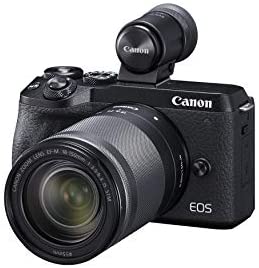
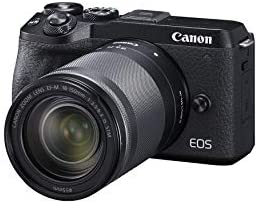
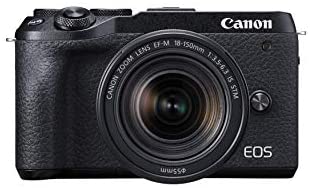
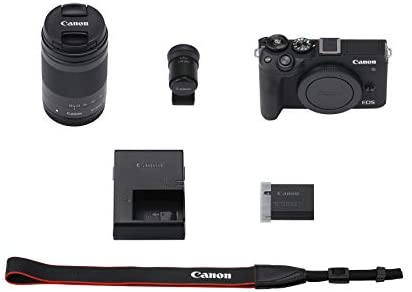

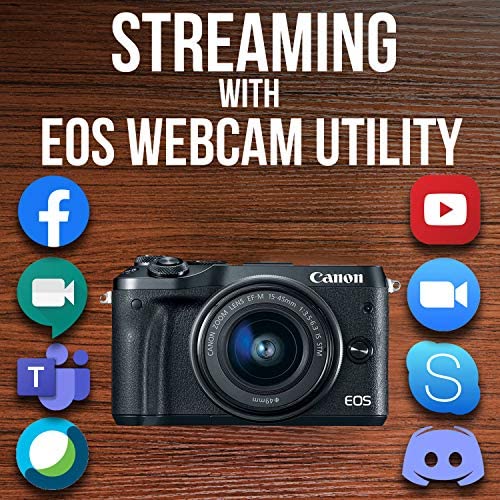
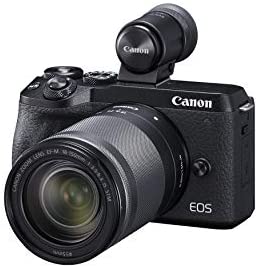
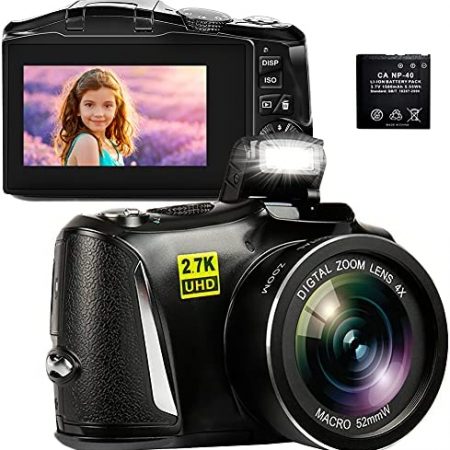
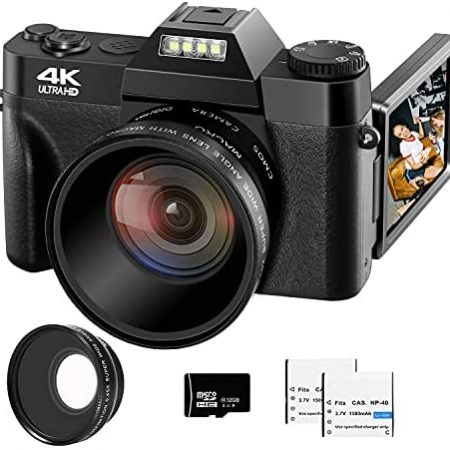
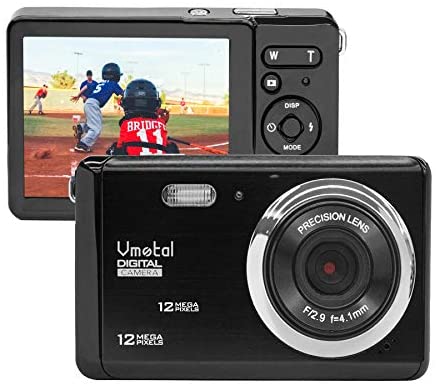
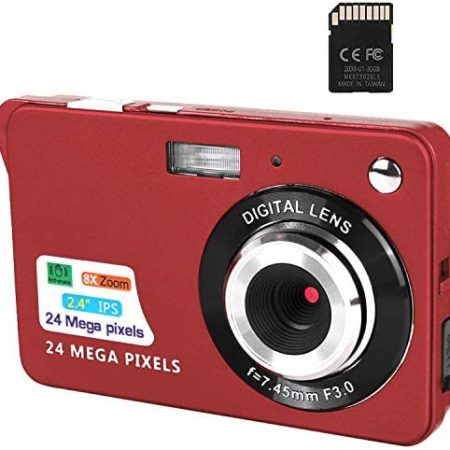
Eric –
I chose this camera mainly for the ability to go small when I take it out with me while also having the ability to adapt to EF lenses specifically for macro photography of coral. I considered the D90 as well as Fuji, Sony, and Nikon options. The Canon D90 was too large, seemed to have poor build quality and the autofocus is lacking through the optical viewfinder. Fuji and Sony did not have an affordable 90 or 100mm macro lens comparable to the Sigma 105mm F2.8. The autofocus is apparently worse with the Nikon options so I did not go that route. The sensor in the Canon is also much higher resolution.
EA –
I don’t like the lack of weather sealing and built-in viewfinder, otherwise it is a great camera.Edit after 8 months of use: I still like the camera a lot. I think it was the right choice for me.Pros:Speed: It is a fast camera. I don’t think this is an obvious choice for action and bird photography, but it is definitely a capable crop-sensor camera compared to alternatives (as of 2020).Auto-focus: Reasonably fast and very accurate.Image resolution: 32.5mp is more than enough, especially given the sensor size.Ergonomics: It is comfortable and small. It has three dials, you can use one for shutter-speed, one of aperture and one for exposure compensation (or ISO). It is fun and convenient to use in the manual mode. I also like the custom modes. I don’t use back-button focusing much, but it is easy to set-up if you need.EF lenses: You can easily adapt older and cheaper EF and EF-S lenses with an adapter. There are many options for adapters starting from around $50. I got the official Canon adapter at a discount for less than $100. I tried Canon EF 50mm STM, EF-S 55-250mm STM and couple of Sigma DG lenses. They are all excellent, no problems in focusing and no reduction in the image quality. Especially the cheap and lightweight EF-S 55-250 STM works great (but, I cannot recommend the IS II version).Cons:The viewfinder: The lack of built-in viewfinder is really inconvenient because the add-on viewfinder sticks out from the camera and makes it impossible to put it in a case. Taking the viewfinder out each time and storing it separately is a big hassle. I also tend to hit it to tree branches accidentally as I hike, and worried that it will be broken at some point. However, since it sticks out, you can use your left eye at the same time while tracking, which is a big advantage for action photography.No weather-sealing: I wish it was weather-sealed, but this given the price point I don’t expect this advanced feature.No in-body-image-stabilization: Again, something I wish it had, but no Canon camera has this feature except the most recent R5 and R6 models (as of August 2020).No RF lens compatibility: The M lenses still don’t have a good selection. It is impossible to adapt the most recent RF lenses due to physical limitations. There will never be a proper RF to M adapter. So if you switch to a full-frame Canon in the future, you will not be able to use your old lenses, unless you buy only EF lenses.
Jay –
This is the first, non-point-and-shoot camera, I’ve purchased. There was a Prime Day deal and $300 off this kit. While it’s a little expensive for someone’s first camera, there are so many options that it will satisfy any tech nerdy person. I’ve picked up a Sigma 30MM lens on an Amazon renew deal and it’s so wonderful. I can only advise you watch a lot of YouTube reviews to see if this offers everything you need. It’s a HEAVILY reviewed item so there is alot out there. The body is smaller than a DSLR since it’s mirrorless, and feels great in your hand. The EVF is a little odd looking, but its CRAZY clear and wonderful on a sunny day.
Bryan St Clair –
My first cannon and I can not complain. Well made, easy to use and fantastic picture quality.
Kaye Olson –
Outstanding camera, having so much fun with it! These are the first two photos I have taken with it. No Editing, just cropped.
Doctor.Generosity –
A niche player in the Canon ecosystemTo evaluate this, one must understand the reason Canon developed the EOS EF-M series, which is not primarily to compete with others in the crop-frame mirrorless market such as Sony, Fuji. The M50 and M200 are directed at new users, but Canon does not really aim the M6 II, which is the most advanced and most expensive M, to the public. Rather, this little camera, which is basically a 90D DSLR stuffed into a small box without the mirror and viewfinder, is meant for current Canon insiders, to make the whole Canon ecosystem more complete. Those who follow the camera industry may know that several of the major players are close to folding. Canon is determined to avoid this fate; Canon and Sony may be the only players left in a couple of years.To understand where M6 II fits then, one must think from Canon point of view. Canon as a conservative in a contracting industry. Their main goal is retaining their large base of pro and advanced amateur photographers by offering a full system. The M6 II is a niche device intended for the existing Canon user who owns a bag full of DSLR and lenses. In that role it carries one of the best sensors Canon has put out, identical to that in the recent 90D DSLR, strong autofocus, consistent menus that users already know, precision build quality, and images which rely on the same well known Canon firmware and colors professional photographers have preferred for decades. Compatibility here is paramount, especially when it comes to consistency of the color output. Committed Canon photographers cannot easily buy into another maker because of the color consistency. Therefore the typical Canon photographer is not going to be adding any non-Canon cameras to get the benefits of crop-frame mirrorless. That is fact #1.With this background, M6 II seems intended to fill three specific roles within the Canon world. First, this is a compact backup or spare body for the Canon DSLR user with numerous EF-S or even EF lenses, through the available adapter. The adapter is not just a metal ring but a significant item – it carries full proprietary electronic passthrough and functionality, so the compact body is able to access autofocus and autoexposure seamlessly, just as on one’s native DSLR. Pro or advanced amateur photogs know that during a photo shoot, with a model or otherwise, it is extremely handy to have a second body-lens ready, with the same settings as the main camera but a different focal length. For this, one does not need a second large and expensive DSLR – just a sort of compact box with a top quality sensor will do. So the first application is as a compact second body.Second, the EF-M series and especially the M6 Mark II is intended to better enable Canon to serve the explosive market for video vlogs and selfies, and for Youtube and Instagram creators – perhaps the most significant growing community for high quality imaging beyond the iPhone. Thus it is designed to be very video capable (4K) and produces quality videos. This also explains why the M6 omits an internal electronic viewfinder, because social media users won’t be holding the camera up to their eye anyway. For those occasions where an eye level EVF is needed, an external attachment (EVF-DC2) is included in most M6 bundles. It’s a bit awkward as a lump on top of the camera, but it’s there if you need it, and it is a very nice EVF. (The M5 model has an integrated EVF, and may be upgraded soon with the latest sensor.) By producing the M6 II, Canon implies they expect most users to need EVF only now and then.Third, the M6 is a high quality compact body for many technical and scientific uses such as attachment to a microscope or for macro closeups, uses for which heavy DSLR’s with flopping mirrors are overkill. Think of a museum employee needing to capture images of small artifacts.The various applications Canon has in mind also explains why they have not put out a large number of new lenses for the EF-M mount – because most users are expected to piggyback on an existing EF/EF-S investment. However, the few new lenses Canon has put out in EF-M mount are each carefully planned and purpose-driven. Beyond the 15-45mm kit lens, there are three unique EF-M lenses I strongly recommend. One is the prime 32mm f1.4, highly corrected with a 14 element design. This is a dense little gem, heavy in the hand and a top quality optic at a 51mm equivalent, intended to squeeze maximum image quality out of the sensor in low light. (It does not however have Image Stabilization, which disappointed me.)The second must-have in my opinion is the 11-22mm wide angle zoom, ported from the design of Canon’s highly regarded 10-18mm EF-S lens, and this one is stabilized. Image stablization for such a wide angle lens is surprising until one realizes the lens is intended primarily for video. I use this all the time. A third niche lens unique to the EF-M mount is the 28mm Macro, also stabilized and claimed to be the world’s smallest macro lens. This is a clever and unique speciality lens with a built-in ring light for closeup illumination. This little lens provides superb macro’s of biological or medical or other tiny objects, very easy to use with its own illumination. In addition it offers prime quality imaging at larger distances, as a 45mm equivalent with better performance than the kit lens. It’s extremely compact as you march through the Bolivian rainforest searching for medicinal plants. The M6 II with this lens does something no Apple or Samsung smartphone can do with the same level of image quality and detail.I do question one choice, the 32.5 megapixel sensor. Such a large pixel count surely has a downside, each pixel being too small to give best noise performance at high ISO – this is just a law of physics. Here Canon seems to have reverted to the bad old days of the megapixel race, driven by the marketing department more than the engineers. The sweet spot for crop-frame sensors with low noise is in the 20-24 MP range, for all Canon’s competitors. I plan to try dumbing down the rsolution from L and see if this benefits the noise performance at high ISO.In summary, M6 II is an speciality niche product which is configured primarily to serve current Canon photographers, not vacationers looking for a small camera, who will be better off with an iPhone or one of the lower cost, consumer friendly M’s. It is a very high quality compact device built with precision and packed with features and capabilities, described in a 548 page manual. It is made in Japan to high standards.Rationale for the design choices may not be evident to the general public, but this is not produced for the general public. Rather it is directed to the pro and advanced amateur Canon communities, responding to the needs of the new social media universe, and adding tools for technical and scientific photography.When we understand where it fits, the M6 II is a brilliant offering. To survive, Canon needs to dedicate itself away from the public and to the more limited but also more committed universe of pro or semipro Canon photogs. The M6 Mk II is an example of that strategy. It is also beautifully manufactured, a pleasure to use, and produces top quality images.
DubbleOrNuthin –
This camera is awesome, it has everything one needs out of box with little need for anything else only extra batteries that can be found 3rd party via Amazon.The amount of options for an optical camera like this is so amazing. I like how the digital display explains what every feature does for video or pictures for noobs like me. I love the CMOS sensor that allows one to zoom without losing quality by simply using sensor cropping.The mic is pretty good but I’ll probably upgrade that soon for better clarity. The EVF is awesome! No more having to squint at the screen on sunny days trying to see what the tracking is seeing. It’s like having a hood for your screen.I am happy I went with this little combo than just the DSLR combo with tons of things you don’t need cause this beats it. Always go with mirrorless cameras, it’s the latest in camera tech, trust me. Do your research on the differences.
Elvin –
This is a great all around pic and movie camera. I am very pleased with it. Great quality camera, pictures and movies. I highly recommend. Too many positive features to mention here. If you want great quality and think it reasonable to spend this much, I do recommend.
EwoK –
Coming from an older vdslr (10yr i think) and the newish sony a6300 (closet competitor to this camera is the a6400) here are my takes (ive only owned this a few days, will update if i find something wrong) -* Features – The biggest feature in terms of advancement of vdslr tech, whether you realize it or not, is wireless live view mode. Since ever if you wanted to see what you are recording and cant get your face directly behind the camera, or see a somewhat larger view to see better, you HAD to be tethered to a monitor/laptop with a fat hdmi cable that could get ripped out or trip/limit you. On top of that YOU COULDNT RECORD AND MONITOR AT THE SAME TIME! so it was ultimately pointless except to frame shots. With this camera you can do both. The connection process has worked every time and is pretty simple, and your connection to your computer is encrypted so whoevers around cant login to the camera and grab your feed or mess up your connection.Maybe the sony a6400 has this feature now but the a6300 did not, knowing the poor quality of sonys software and cameras this is unlikely. Canons wireless live view isnt perfect, there will be stuttering, but considering it works smoothly 90% of the time and nothing else like it exists, particularly at this price point, this is a steal. To give perspective to new camera buyers, $1100 for a 4k camera and lens with these features would have been 10-50x the price a decade ago if it even existed at all. To hear anyone complain about the price of this camera is comical and somewhat delusional.* Picture quality – 4k is noticeably better than sonys a6300. Both did 30fps. Both will have the same pan-stutter, and be limited in sharpness and speed by whatever lens you are using. The way this camera handles dynamic range of scenes through its iso/apeture/shutter adjustments is smooth and avoids white areas fairly well even when aimed from inside to outside.* Autofocus – Sony may have the edge here**. There is a 1-2 second delay between far-wide movements, sony was about 1 second. However this camera will just adjust smoothly and lock it in, sony did this weird thing where it would kinda wobble in and out of focus for another second, that is really annoying to look at. I found the zone af to be the most accurate and focused when shooting anything other than faces. ** The edge was speed, however after several months of using the camera the autofocus stopped working. A friend of mine had the same camera and he said it had happened to him too.* Menu/controls – Canon blows sony out of the water with this. The menu structure of a sony dslr is frustrating. The way they organize and nest their menus had me looking for a setting for waay too long, and it was clunky navigating around. Canon is fairly intuitive and condensed so there is not 100 extra ‘features’ like sony like to jam into their cameras, just what you need and a few things you dont. Also this one has a touchscreen, which ive never been really into, but when it comes to setting an autofocus point or moving it around makes it super easy, sony was not easy or very controllable to set, like it took hitting a certain button combo to access and adjust.* Image stabilization – I dont recall if the sony was in-body or lens, canon has lens stabilization. I can handhold and its smoooth, almost as if it was on a steadycam. Sony stabilization was adequate, but did this weird floating shift effect.* Build quality – It is comparable, both felt fairly solid, canon has a better handheld experience with the shape of the grip.My biggest gripe with sony besides the horrible menu system is the fact that the autofocus died shortly into its life. This was the biggest reason i got the a6300, it was advertised as the fastest af on the market, but it turns out it was the fastest to die. Sony has a long reputation of being a large conglomerate pushing mediocre products, where canon is a camera company dedicated to making cameras. This buy was a choice between the m6mk2 and the eos-r, which the only main difference is that its a full frame sensor with larger pixel sites which gives it way better dynamic range and clarity, but you will pay $800 more for the body alone, no lens, and the lenses for that camera arent cheap. Im all about getting the best quality but unless you are making money off the camera or have deep pockets the m6mk2 is has a much better price/performance ratio.
Debra F. –
I got this for a much-needed upgrade to my old DSLR and it’s my first proper mirrorless camera. It shoots like a dream, and a huge cost saver if you already have lenses for other cameras if you grab an adapter (although I’m planning on getting more lenses in the future). The flip-out screen is also so nice to have and the software that Canon came out with so you can use it as a webcam is just icing on the cake, especially when you can flip the screen to make sure you are still in the shot during web meetings and such. I also grabbed a tempered glass screen protector since the touch screen is pretty exposed and I’m always paranoid about screen damage. I’m still getting used to just how light it is compared to my older camera, and it feels more carry friendly for those that may not like weight in their bag.